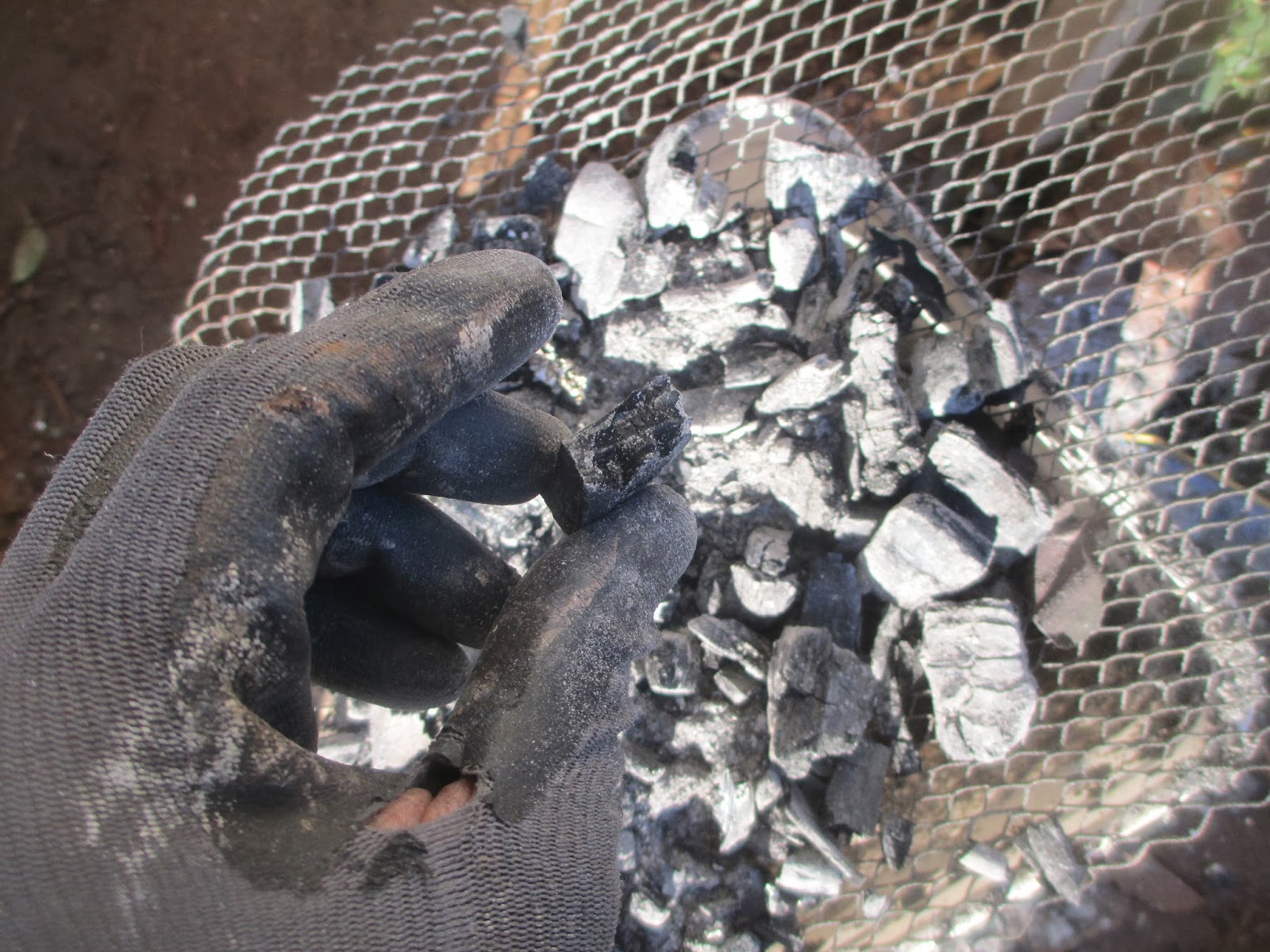I had been trapped in the house and the rain (did I forget to mention the torrential downpours and tornado warnings we had received once the temperature came back up?) for several days and though I had been working, I tend to get a little cabin fever when kept inside too long.
Since I had time to burn and a desire to experiment, I thought I would kill two birds with one stone, (three if you count keeping warm) and fuddle around with making both bio char and lye for soap in the future.
11briar is surrounded by huge, old pecan and oak trees and there are plenty of scraps around. I took a stroll in the rain and gathered some to add to a small fire. I used a fire container (I am stopping short of calling a it a kiln) made from a discarded 5 gallon paint barrel with holes in the bottom for ventilation. and of course, an open top.
 The burn was rather haphazard and it was difficult, at first, to get going. It burned faster at the top where there was more air and slower at the bottom where there was less air and spent ash collapsing at the bottom closing the holes.
The burn was rather haphazard and it was difficult, at first, to get going. It burned faster at the top where there was more air and slower at the bottom where there was less air and spent ash collapsing at the bottom closing the holes.When the burn was done, I simply sifted the whole thing out for separate purposes. The large pieces of charred wood were used for bio char and the
white ash is used to for making lye lye.
Bio char is an effect caused by what is called pyrolysis. It is the burning of carbon based material in low oxygen so that you are left with pure carbon. The burning of it causes it to fracture in unique ways. That pure black, blocky structure is the most porous substance on earth and the perfect way to sequester carbon. Beyond that, it is great in gardens. Once burned, it is basically innocuous but those little nooks and crannies created in the burn are perfect homes for micro nutrients that worms and more love. So it draws positive things to the clay like soil around here.
The lighter white ash is drawn to the top and separated to make lye. With all the rain around here we have plenty of soft rainwater that is perfect for making lye and making soap. We simply added the ash to a four gallon container of rain water and we wait. In the next couple of days, we should see a separation of the lye from the water and we just skim the lye off the top.
The goal is to find complete sustainability and I am working on a more efficient kiln. Still, done correctly and consciously, this is an incredibly efficient and carbon negative way of dealing with copious amounts of bio-mass. It is definitely the way we are going to deal with the refuse at City in the Woods
